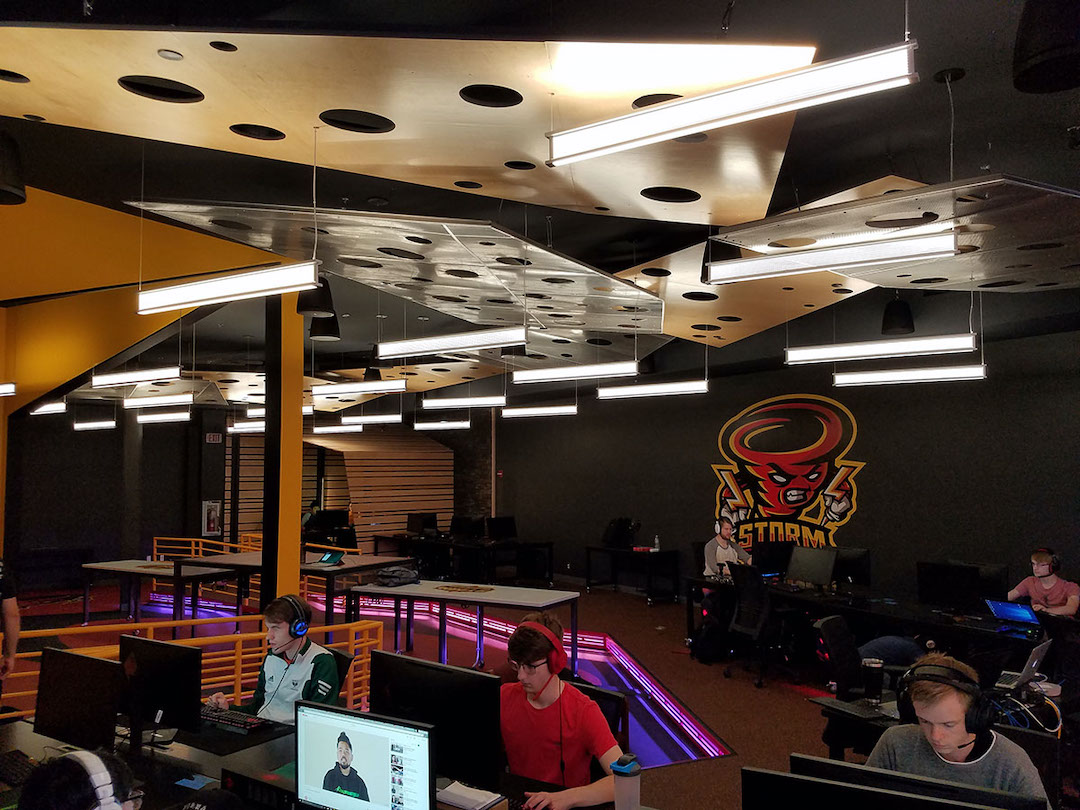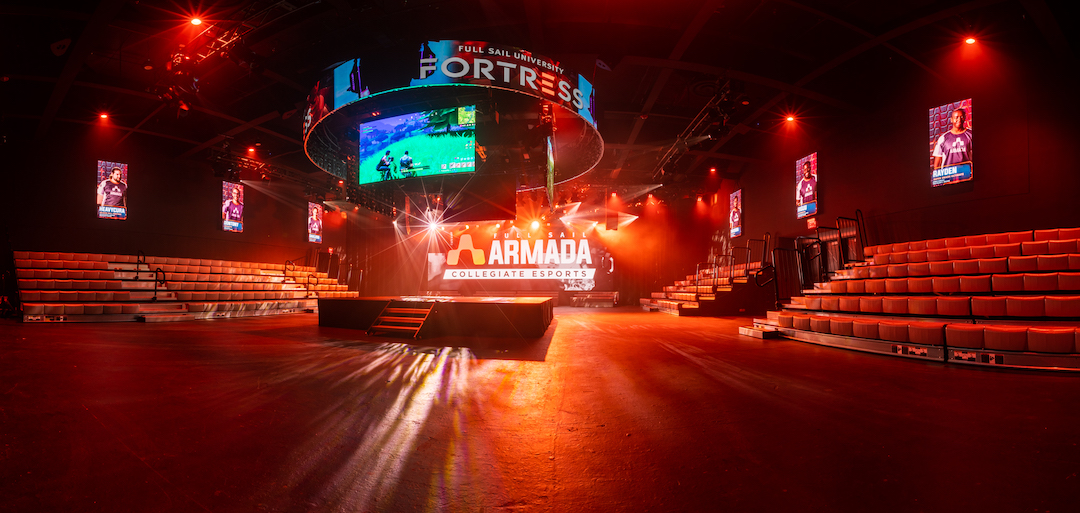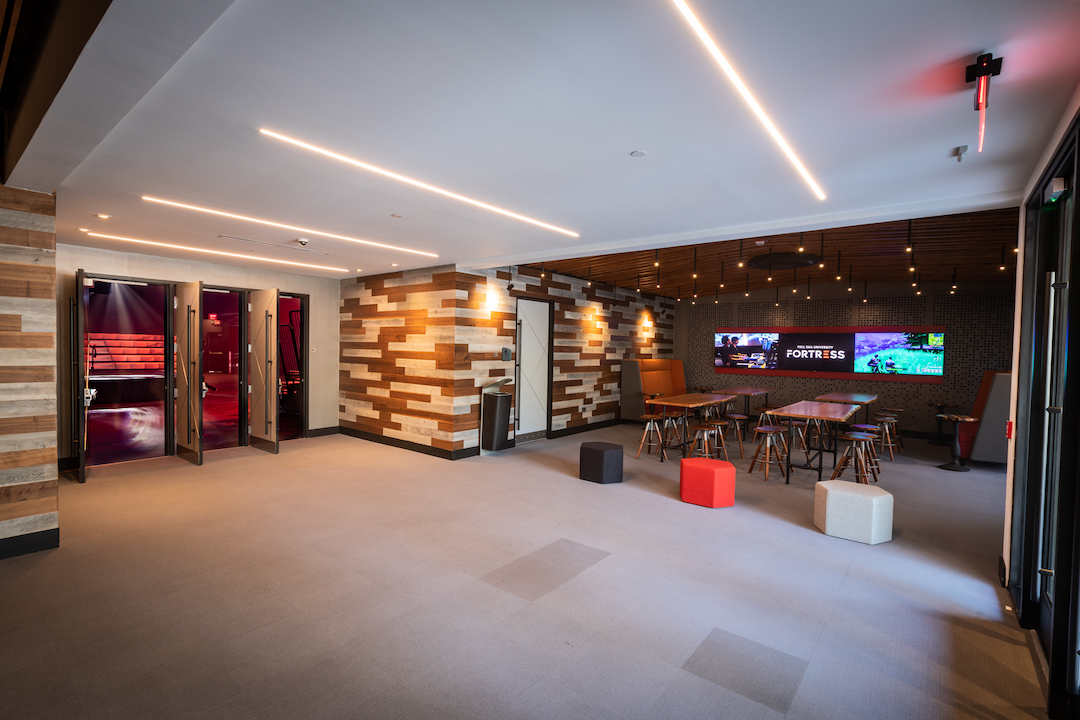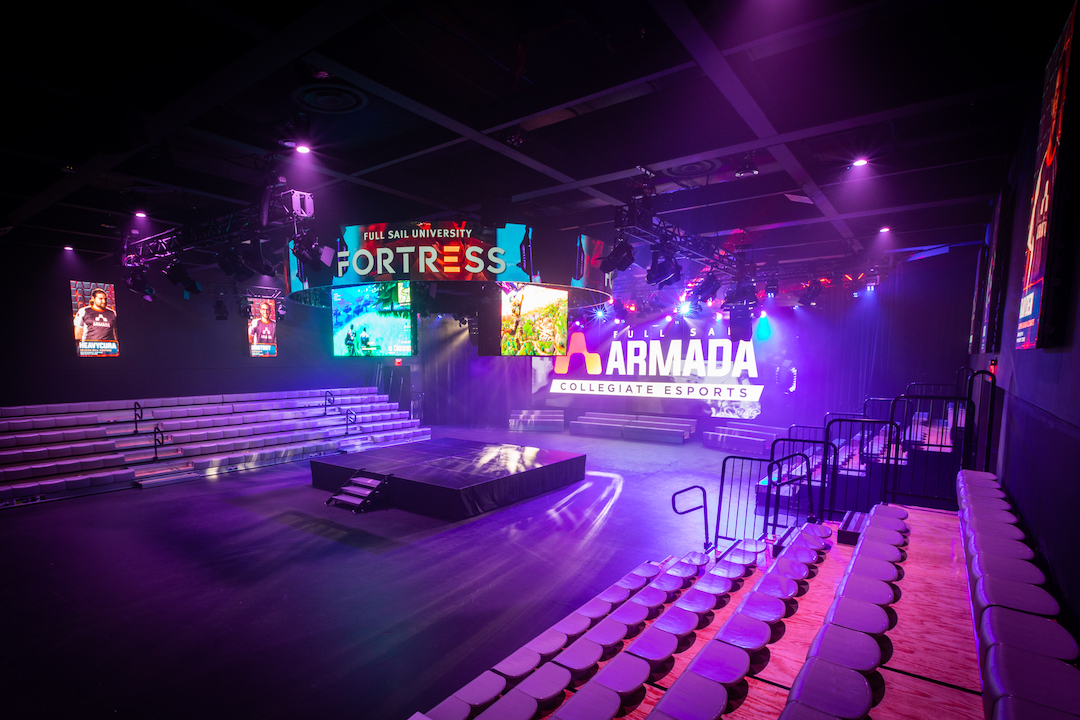The success and popularity of eSports is no longer a surprise to anyone. Purpose-built eSports stadiums are popping up both around the country and the world, hosting events with audiences and prize pools pushing well into the millions.
But now the eSports rocket ship is continuing its journey through the stratosphere, pushing ahead on another front: the college campus. In 2018, Ashland University became the first school in the country to offer scholarships (up to $4,000) for competitive gaming. Other colleges quickly followed suit, and there are now over 60 colleges in the United States offering scholarships in a variety of different games. Robert Morris University offers a scholarship for the game League of Legends that totals $76,000 over a four-year period (50% tuition and 50% room and board per year), rivaling scholarships offered for more traditional sports.
With money like that being thrown around, it’s clear video games are no longer just a hobby; eSports have become a very real and very unique recruiting tool, especially among smaller schools that can’t compete with D-I schools in sports like football and basketball.
See Also: Gamers paradise: The rise of eSports arenas
“The smaller D-II, D-III, and Ivy League schools now have an opportunity to compete on a larger scale and are really embracing eSports,” said Benedict Dubbs, Jr. AIA, LEED A.P., Principal, Murray Associates Architects. “Where else can ‘David beat Goliath’ anywhere in the world without a road trip?”
But in order for David to beat Goliath, they need an arena to fight in. Which is why small colleges such as Harrisburg University of Science and Technology (HU) and Full Sail University have taken it upon themselves to create dedicated eSports arenas and facilities for their student eSports athletes.
HU’s eSports Training Arena
The Storm, HU’s competitive eSports team, recently received a new training facility courtesy of Murray Associates Architects. The architect took a vacant dance studio in the Whitaker Center for Science and the Arts and turned it into HU’s eSports Training Arena.
The 2,460-gsf facility features 24 gaming rigs, a coaching suite, and a student lounge, all designed to enhance the team’s coaching and player collaboration, interactions, and skill development. Flexibility was also a main design focus for the space. Some competitive games are played 1 vs 1, while others pit larger teams against each other. Different games require different set ups, and the relatively small 2,400-sf space needed to be able to accommodate them all.
 Photo courtesy HU.
Photo courtesy HU.
The entirety of the arena’s power and data cabling runs beneath a custom-designed raised floor with 35 grommets that open access panels. “This design element allows HU to rearrange the gaming stations, pull cable, and quickly rearrange the entire training arena,” said Dubbs. “The concealed cabling is also a safety solution; students can move freely about the space without any trip hazards.”
In fact, the only static power and data in the entire arena was installed in the center core island, or “bullpen,” which is hardwired to the sides of the tables. The bullpen supports team meetings, strategy sessions, socializing, dinners, and other collaborative activities, so having access to technology was vital.
 Photo courtesy HU.
Photo courtesy HU.
The eSports Training Facility differs from more commercial eSports arenas in that it is for players and coaches only. HU Storm matches are viewed in an auditorium in another part of the Whitaker Center for Science and the Arts, meaning everything in the space is designed to help the Storm master their skills; you won’t find branded food and beverage options, a stage for the eSports athletes to play on, or other spectator-focused amenities like premium seating options.
Another lesser-known college, however, has decided to use commercial eSports stadiums as a template to create the largest on-campus collegiate eSports arena in the country.
The Fortress eSports arena at Full Sail University
The Fortress, Full Sail University’s new $6 million eSports arena, is an 11,200-sf space that can accommodate 100 eSports athletes and over 500 live spectators simultaneously. Designed by Blackenship Architects, the arena, much like HU’s Training Facility, was built to be as flexible as possible in order to support any size eSports event. Unlike HU’s space, however, The Fortress was designed not only to be at the forefront of eSports facilities for the college’s athletes, but for spectators as well.
As such, The Fortress features 10 million pixels of LED wall, a concert level PA system, modular wood beam ceilings, live streaming equipment, dynamic sound and lighting solutions, the latest generation live video equipment by Ross Video, Sony video monitors and cameras, large high-resolution LED screens by Absen, multi-zone loudspeaker systems by L-Acoustics, media servers by Green Hippo, and high-bandwidth dedicated internet connectivity. All of this technology combines to create an “intense spectator experience,” according to Stella Posada, Sr. VP of Image & Design at Full Sail University. “We knew we wanted to provide the best eSports experience for both competitor and viewer alike, so it was a priority that we collaborated with thought leaders throughout our various internal teams,” Posada said.
 Photo courtesy Full Sail University.
Photo courtesy Full Sail University.
And while Full Sail University approached the project using commercial eSports venues as inspiration, The Fortress also fulfills a unique roll for the school’s students. Each live event hosted in the space provides students the opportunity to hone their skills in areas beyond eSports, such as show production, film, graphic design, gaming, and entertainment and business.
Overall, the school approached the design of The Fortress with three main goals:
– Create a leading-edge facility to support its collegiate level eSports team, Armada
– Create a space to serve as an experiential educational learning environment
– Create a space that supports collegiate and professional level eSports events, while adding to the technology and eSports landscape of the region
 The Fortress lobby space welcomes spectators into the arena before ushering them into the main gaming and viewing space. Photo courtesy Full Sail University.
The Fortress lobby space welcomes spectators into the arena before ushering them into the main gaming and viewing space. Photo courtesy Full Sail University.
Additionally, the campus’s aesthetic had to be taken into account. “The Fortress at Full Sail University was created as a continuation of the fluid campus design allowing seamless spaces to merge throughout the campus,” Posada said.
To date, The Fortress has hosted varied events such as Call of Duty tournaments; Red Bull’s regional fighting game series, Conquest; and the Hearthstone collegiate championship finals.
Division 1 eSports arenas: Is Goliath preparing a counterattack?
While smaller universities are currently the vanguard for collegiate eSports venues, it may just be a matter of time before larger schools join the party.
Although they haven’t quite committed to the same level as smaller schools, D-I schools such as Ohio State University, Penn State, and Georgia Tech all have eSports teams that are actively competing in tournaments. Ohio State has even opened its own version of an eSports Arena with 80 gaming computers, consoles, and virtual reality systems; a room for competitive gaming with peer universities; and a broadcast booth.
Although the space is less “arena” and more “computer lab,” it is still a sign that D-I schools are taking eSports seriously. And while there isn’t the eSports equivalent of Duke’s Cameron Indoor Stadium or USC’s Coliseum yet, “yet” may be the key word in this equation.
See Also: With a new type of stadium comes a new type of premium seat
“Larger universities that have heavy technology majors are getting involved, but the majority have clubs within their student life or activities departments and are not yet embracing the incorporation of eSports into their athletic programs,” Dubbs said. “However, with the revenue for eSports approaching $1.5 billion, I believe larger universities will eventually become involved because the potential for increasing their revenue stream will be too tempting to ignore.”
For now, the David’s of the college landscape (HU, Full Sail University) are leading the eSports charge, but it won’t be long until a Goliath comes along and builds a university eSports arena to rival even the leading commercial facilities in the world. With revenue in the billions, it’s less a matter of “if,” and more a matter of “when.”
Related Stories
| Aug 11, 2010
Jacobs, HDR top BD+C's ranking of the nation's 100 largest institutional building design firms
A ranking of the Top 100 Institutional Design Firms based on Building Design+Construction's 2009 Giants 300 survey. For more Giants 300 rankings, visit http://www.BDCnetwork.com/Giants
| Aug 11, 2010
Draft NIST report on Cowboys practice facility collapse released for public comment
A fabric-covered, steel frame practice facility owned by the National Football League’s Dallas Cowboys collapsed under wind loads significantly less than those required under applicable design standards, according to a report released today for public comment by the Commerce Department's National Institute of Standards and Technology (NIST).
| Aug 11, 2010
Recreation facility scores with sustainable features
A new $79.1 million health and learning center is under construction on the Northern Arizona University campus in Flagstaff. The 270,000-sf facility will house recreation space, classrooms, health and counseling services, and the Lumberjack Stadium for track and soccer teams. Designed by the Phoenix office of OWP/P Cannon Design with Mortenson Construction as CM, the project is aiming for LEED ...
| Aug 11, 2010
And the world's tallest building is…
At more than 2,600 feet high, the Burj Dubai (right) can still lay claim to the title of world's tallest building—although like all other super-tall buildings, its exact height will have to be recalculated now that the Council on Tall Buildings and Urban Habitat (CTBUH) announced a change to its height criteria.
| Aug 11, 2010
TCF Bank Stadium first new football stadium to get LEED certification
The University of Minnesota has received LEED Silver certification for its 50,805-seat TCF Bank Stadium, making it the first new football stadium in the country to achieve LEED status. Designed by Populous, Kansas City, Mo., the facility features a stormwater management system that captures and stores rainwater in an underground filtering system, where it is harvested, filtered, and drained int...
| Aug 11, 2010
Construction begins on Louisiana State Sports Hall of Fame
Heavy construction and foundation work has started on the new Louisiana State Sports Hall of Fame and Regional History Museum in Natchitoches, La. Designed by Trahan Architects, Baton Rouge, the $12 million, 28,000-sf museum will be clad in sinker cypress planks as a nod to the region’s rich timber legacy and to help control light, views, and ventilation throughout the facility.
| Aug 11, 2010
Modest recession for education construction
Construction spending for education expanded modestly but steadily through March, while at the same time growth for other institutional construction had stalled earlier in 2009. Education spending is now at or near the peak for this building cycle. The value of education starts is off 9% year-to-date compared to 2008.
| Aug 11, 2010
Great Solutions: Green Building
27. Next-Generation Green Roofs Sprout up in New York New York is not particularly known for its green roofs, but two recent projects may put the Big Apple on the map. In spring 2010, the Lincoln Center for the Performing Arts will debut one of the nation's first fully walkable green roofs. Located across from the Juilliard School in Lincoln Center's North Plaza, Illumination Lawn will consist ...
| Aug 11, 2010
Dream Fields, Lone Star Style
How important are athletic programs to U.S. school districts? Here's one leading indicator: In 2005, the National Football League sold 17 million tickets. That same year, America's high schools sold an estimated 225 million tickets to football games, according to the American Football Coaches Association.
| Aug 11, 2010
Giants 300 University Report
University construction spending is 13% higher than a year ago—mostly for residence halls and infrastructure on public campuses—and is expected to slip less than 5% over the next two years. However, the value of starts dropped about 10% in recent months and will not return to the 2007–08 peak for about two years.







